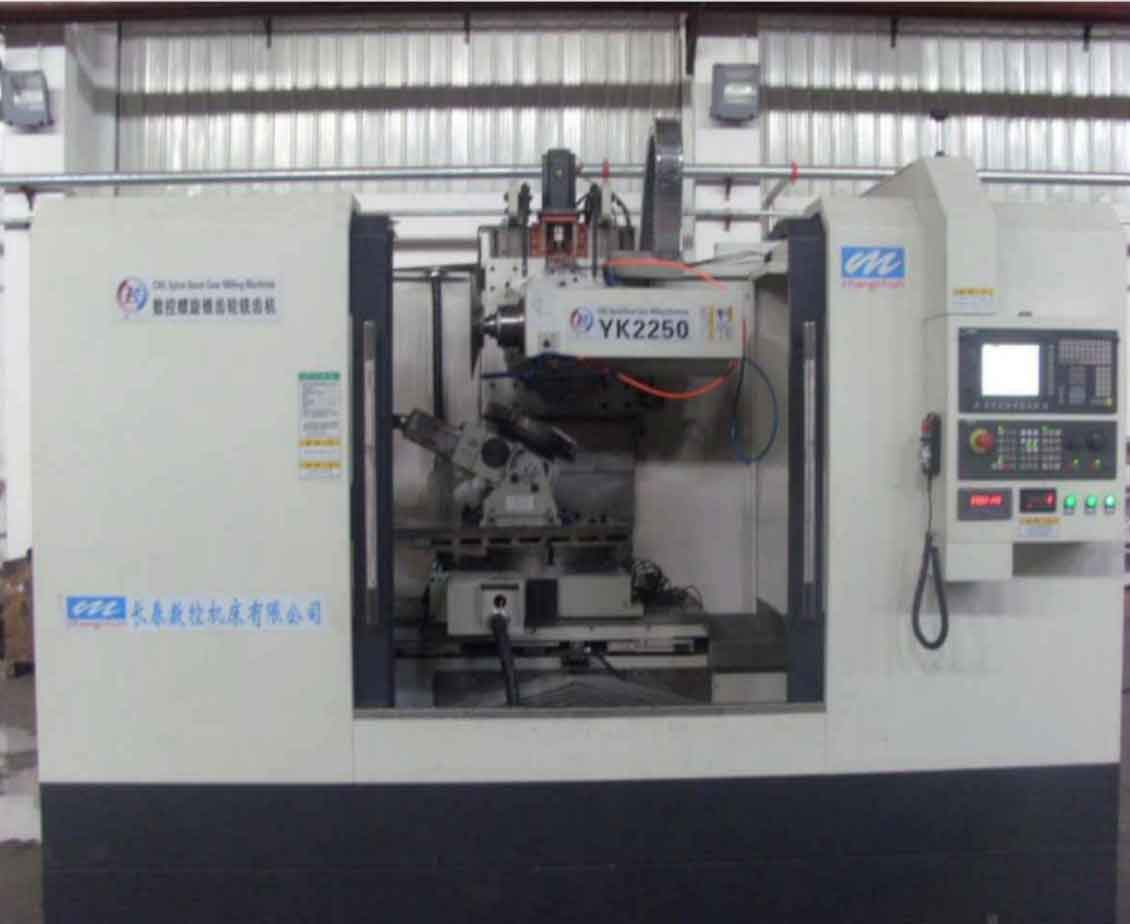As specialized equipment for machining spiral bevel gears, CNC spiral bevel gear milling machines frequently encounter jamming issues during numerical control processes due to inherent backlash in transmission systems. This backlash induces impact vibrations that compromise machining accuracy. Traditional anti-backlash methods like spring-loaded or mechanical preloading exhibit limitations in precision stability. The dual-motor servo anti-backlash technique overcomes these constraints by employing coordinated torque control to eliminate nonlinear transmission errors.

Dual-motor anti-backlash systems comprise two identical servo motors coupled to individual reducers and drive gears that engage a common rack. The torque compensator applies bias torques (\(M_b\)) to both motors such that:
$$M_{d1} = M_{m1} + M_b$$
$$M_{d2} = M_{m2} – M_b$$
where \(M_{m1}\) and \(M_{m2}\) denote motor output torques. During operation, these bias torques ensure continuous engagement on opposing tooth flanks, eliminating dead zones through four distinct phases:
Phase 1 (Startup: ω=0): Motors generate equal opposing torques where \(M_{d1} = -M_{d2} = M_b\). The rack experiences zero net force (\(F_{net} = 0\)), immobilizing it within the backlash zone.
Phase 2 (Acceleration: ω>0): Torque compensator redistributes bias such that \(M_{d1} > M_{d2}\). Net torque drives the rack forward:
$$M_{net} = M_{d1} – M_{d2}$$
Phase 3 (Mid-acceleration): As \(M_{d2}\) approaches zero, the follower gear disengages and re-engages on the driving flank. Motion continues under \(M_{d1}\) alone.
Phase 4 (Steady-state): Both motors share load equally with minimized bias torque (\(M_b \approx 0\)). Direction reversal follows analogous torque-reversal sequences.
Our experimental platform integrates an industrial PC (IPC), a Delta Tau Power PMAC CK3E motion controller, and two CDHD drives paired with PRHD2-0700 servo motors (rated torque: 4.77 N·m). Communication utilizes EtherCAT industrial Ethernet with a cycle time of 500μs. Control algorithms execute within Power PMAC IDE, implementing velocity-torque profiles through PLCs and servo routines. Key parameters include:
| Component | Specification |
|---|---|
| Controller | Power PMAC CK3E |
| Servo Motors | PRHD2-0700 (4.77 N·m) |
| Drives | CDHD-0070A-00 |
| Control Cycle | 500 μs |
| Feedback Resolution | 20-bit absolute encoders |
Velocity step-response tests at 30,000 pulses/s and 60,000 pulses/s demonstrated smooth synchronization between master and follower axes. Figure 1 shows velocity profiles with near-perfect tracking during acceleration, steady-state, and reversal. Speed differentials (\(\Delta\omega\)) remained below 0.5% across all operational phases.
Quantitative analysis of maximum speed fluctuations (\(\Delta n\)) reveals significant stability improvements:
| Speed Differential (pulses/s) | Master Motor \(\Delta n\) (%) | Slave Motor \(\Delta n\) (%) |
|---|---|---|
| 5,000 | 2.5 | 2.4 |
| 10,000 | 1.5 | 1.6 |
| 15,000 | 0.5 | 0.4 |
| 20,000 | 0.3 | 0.35 |
The system reduced peak velocity fluctuations by 88% on the master axis and 85.4% on the slave axis compared to single-motor configurations. This directly translates to improved positioning accuracy during spiral bevel gear milling operations. The torque compensation algorithm maintained backlash elimination across 10,000 direction reversals without performance degradation.
Dual-motor anti-backlash technology effectively eliminates transmission nonlinearities in spiral bevel gear milling machines through coordinated torque control. Experimental validation confirms:
- Velocity synchronization errors remain below 0.5% across 20–60k pulses/s operating ranges
- Peak speed fluctuations reduced by >85% versus conventional drives
- Direction reversal transients occur without position overshoot or mechanical shock
This approach enhances spiral bevel gear milling precision by eliminating backlash-induced positioning errors while improving servo stiffness. The methodology’s reliability makes it suitable for high-precision gear manufacturing applications requiring micron-level accuracy.
